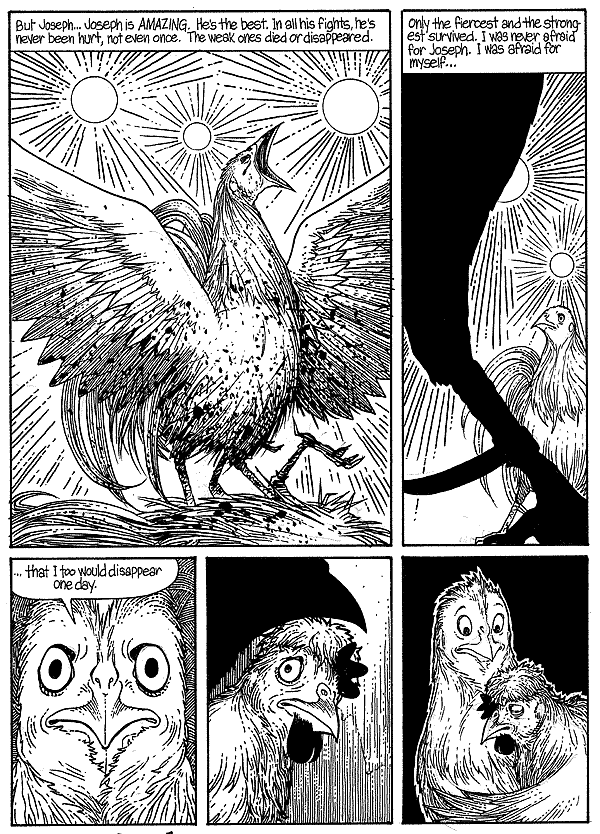Early history

Comics culture in Mexico is far from being a modern phenomenon. Its roots may be traced back to many stages in Mexican history. Indeed, Mexican intellectuals such as Ilan Stavans agree that pre-Columbian codices and other ancient documents could be seen as primary sources of the comics culture in the country.
Revolutionary times

Another important influence has been the work of José Guadalupe Posada whose satirical cartoons helped create a political identity of visual art. Political satire was quite a strong movement in the Porfiriato and many newspapers become almost legendary because of its political comics.
Because of political repression, the political cartoon ("caricatura polÃtica") became the only means of free expression in those years.
The twenties, thirties and onward

Later, there would be a national industry for many decades with great authors like Yolanda Vargas Dulché (founder of Grupo Editorial Vid), starring titles like MemÃn PinguÃn, La Familia Burrón, Chanoc among many others.
From the 1930s through the 1970s, Mexico still had a thriving comic-book industry with diverse genres. Authors and artists like Gabriel Vargas, Oscar González Guerrero and Rius became famous with very original and diverse comic book series and titles such as PepÃn, Fantomas, Kalimán, Hermelinda Linda, Los Supermachos, Los Agachados, Las Aventuras del Santo, Tinieblas, Blue Demon, El TÃo PorfÃrio, BurrerÃas, Smog, Don Leocadio, Zor y los Invencibles, Las Aventuras de Capulina, Las Aventuras de CepillÃn, El Monje Loco and MemÃn PenguÃn to name a few. Most of these books sold millions of copies during this era.
The foreign sci-fi and fantasy boom

During the early eighties American superhero and sci-fi comics poured into Mexico. The cheaper price of reprinting foreign titles combined with the perception that comics were only for kids, nearly wiped out indigenous comic books in Mexico. Las Aventuras de ParchÃs, El Pantera, El Hijo del Santo, Katy la Oruga, Timbiriche, Videorisa, Karmatron y los Transformables, Hombres y Heroes and Destrúktor el Defensor Cósmico were some of the very few titles produced locally to great demand. The only genre to survive, and even thrive, was a unique form of adult pulp comics.
In Mexico, adult comics go by a number of names, like "sensacionales" or "ghetto librettos." They are published in huge numbers as roughly square-shaped digests, about 96 pages long, in a realistic but uncomplicated "house" style. Most are sold cheaply at newsstands, either new or second-hand.
Sensacionales are known for their lurid subject matter, with stories and images that can get very gory or pornographic â€" or even a combination of the two. Typical titles include Bellas de Noche ("Ladies of the Night") or Relatos de Presidio ("Stockade Tales").
The asian invasion

In the 1990s the Mexican comics industry began to be revived, importing again USA heroes comics and some national ones like Ultrapato, Tinieblas, Son of the Night and Penumbra. The national industry went through many inner problems getting almost killed again. The only survivors went to magazines or newspapers mainly as comic strips but not as individual autonomous issues. The most popular, like El Cerdotado or Buba have managed to get anthologies of their strips. In this decade, manga also began to arrive with titles like Dragon Ball and Video Girl Ai, which started a very successful trend of Spanish translated Japanese manga that has continued until recent times.
Modern times

In the last years, with the immense popularity of manga across the world, the Mexican comic industry seems to getting back on track with Editorial Toukan (whose whereabouts are uncertain at the moment) and Editorial Vid publishing, along some USA comics, many new manga titles translated into Spanish. Manga has been one of the comic genres with the more growth in the last years.
In recent Mexican comics the political satire is still quite strong and there are some attempts of new autonomous comics like El Arsenal, Rebelde, Meteorix 5.9 and Goji: Un Dragón con Ãngel as well as the revival of older titles like Tinieblas and Karmatron.
See also
- Gabriel Vargas
- Rius
- Paco Calderón
- Trino Camacho
- Kalimán
- Oscar González Guerrero
- Oscar González Loyo
- Karmatron
- ¡Ka-Boom! Estudio
- Ultrapato
- Oscar Alvarado
- Cerdotado
- Rebelde
- El Arsenal
References
External links
- History of Mexican Comics - Fan site
- El Cerdotado Spanish Wikipedia page
